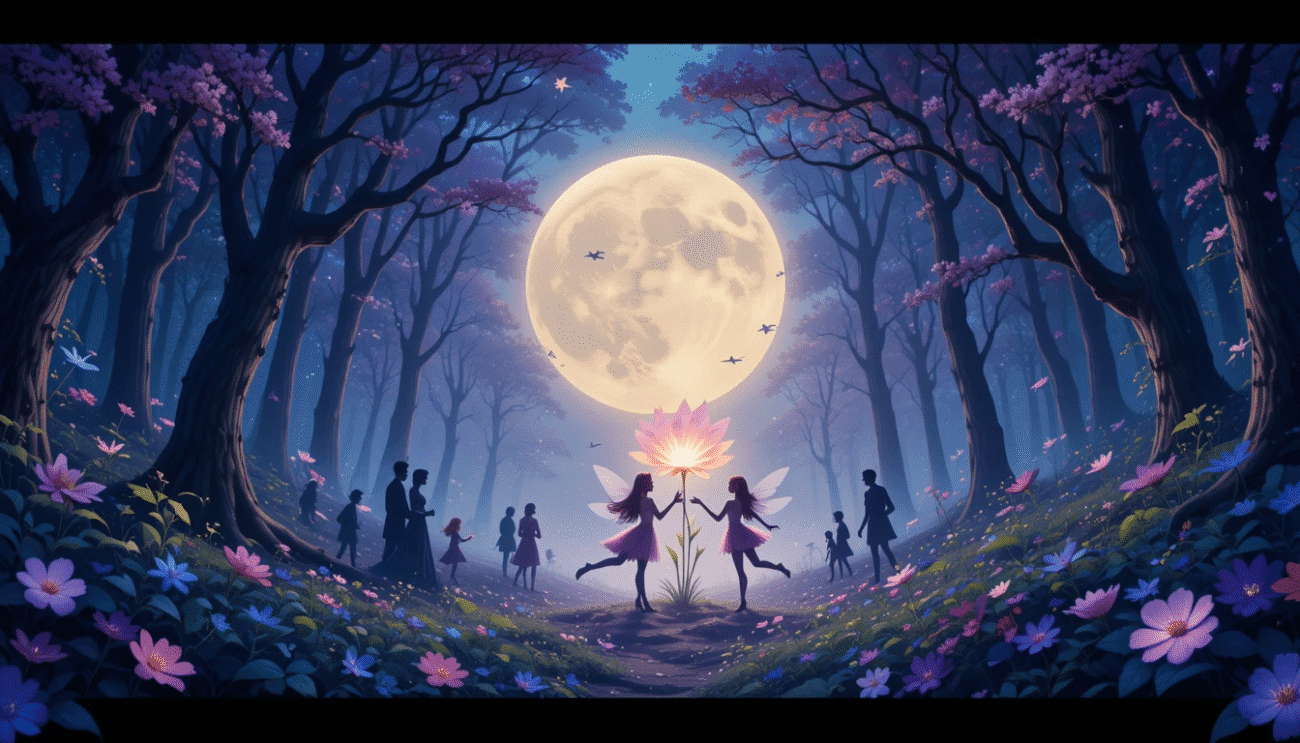Have you ever wandered into a world where love twists hearts and fairies meddle with fate? A Midsummer Night’s Dream, often mistitled as “Midnight Summer Dream,” is Shakespeare’s enchanting comedy that blends romance, magic, and chaos. For students, readers, or theater lovers, grasping its plot and themes can feel daunting. Fear not! In this article, you’ll discover a clear summary of Midnight Summer Dream, key characters, themes, and why it captivates audiences today. Let’s dive into this moonlit tale!
Table of Contents
What Is A Midsummer Night’s Dream?
A Midsummer Night’s Dream, written by William Shakespeare around 1595, is a romantic comedy that unfolds during a summer solstice. Often searched as “summary of Midnight Summer Dream” due to its dreamy, moonlit setting, it’s a play of mistaken identities, magical interventions, and love’s absurdity. Set in Athens and a mystical forest, it weaves three interlocking stories.
Why read it? Its blend of humor, fantasy, and human folly makes it timeless. According to Harold Bloom, “Nothing by Shakespeare before A Midsummer Night’s Dream is its equal” for its originality. The play’s structure—mortals, fairies, and artisans—creates a rich tapestry for exploring love and chaos.
Historical Context
Written during the Elizabethan era, the play reflects a patriarchal society where daughters were seen as property. Yet, it also hints at Renaissance humanism, celebrating individual choice. This tension adds depth to its romantic conflicts.
Plot Summary of Midnight Summer Dream
The play follows four young lovers—Hermia, Lysander, Demetrius, and Helena—entangled in a chaotic love quadrangle. Hermia loves Lysander but is betrothed to Demetrius, whom Helena adores. They flee to a forest where fairies, led by Oberon and Titania, meddle with a love potion, causing hilarious mismatches.
Meanwhile, Oberon quarrels with Titania over a changeling boy, using the potion to make her love a donkey-headed Bottom, a bumbling artisan. A group of craftsmen, including Bottom, rehearse a play for a duke’s wedding, adding comic relief. By dawn, Oberon restores order, and the lovers pair correctly: Hermia with Lysander, Helena with Demetrius.
Key Plot Points
- Hermia defies her father’s marriage decree.
- Puck’s potion causes romantic chaos.
- Bottom’s transformation adds absurd humor.
- All conflicts resolve for a triple wedding.
Tip: Visualize the forest as a dreamlike maze where love defies logic.
Key Characters in the Play
The characters drive the summary of Midnight Summer Dream’s charm. Each group—lovers, fairies, and mechanicals—brings unique energy.
| Character | Role | Key Trait |
|---|---|---|
| Hermia | Lover | Defiant, loyal |
| Lysander | Lover | Romantic, steadfast |
| Oberon | Fairy King | Jealous, cunning |
| Bottom | Artisan | Comically vain |
Notable Quote
“The course of true love never did run smooth.” – Lysander. This captures the play’s heart: love is messy but transformative.
Fun Fact: Bottom’s name hints at his “bottom” status in society, yet he steals the show with his antics.
Major Themes Explored
The summary of Midnight Summer Dream reveals deep themes beneath its comedy. Love, dreams, and disorder stand out.
Love’s Irrationality
Love is portrayed as a chaotic force, manipulated by potions and whims. Helena’s unrequited love for Demetrius mirrors real-life heartbreak, while the potion symbolizes love’s unpredictability.
Dreams vs. Reality
The forest blurs reality, with characters questioning their experiences. This reflects the play’s title, evoking the dreamlike quality of midsummer nights.
Order vs. Disorder
Chaos erupts when social and natural orders clash, but Oberon’s restoration brings harmony. This mirrors Elizabethan beliefs in divine order.
Takeaway: The play reminds us that chaos can lead to growth.
Why It Still Resonates Today
Why does A Midsummer Night’s Dream endure? Its universal themes and humor transcend time. Modern audiences connect with its exploration of love’s complexities and the blurred line between reality and fantasy.
The play’s feminist undertones—Hermia’s rebellion against patriarchal control—resonate in today’s discussions of gender roles. Its environmental hints, like the forest’s magic, align with ecofeminist readings. Plus, its adaptability shines in films and theater, from modern retellings to ballet.
Social Proof
Over 50% of high school English curricula include this play, proving its educational value. Its frequent performances worldwide show its cultural staying power.
Call to Action: Watch a live performance to feel its magic firsthand!
Frequently Asked Questions
What is the main plot of Midnight Summer Dream?
A Midsummer Night’s Dream follows four lovers and a group of artisans entangled in a magical forest. Fairies, led by Oberon, use a love potion, causing romantic chaos. By the end, love is restored, and all celebrate a triple wedding.
Who are the main characters in Midnight Summer Dream?
Key characters include Hermia, Lysander, Demetrius, Helena (lovers), Oberon, Titania, Puck (fairies), and Bottom (artisan). Each drives the play’s themes of love and chaos.
What themes are in Midnight Summer Dream summary?
The play explores love’s irrationality, dreams vs. reality, and order vs. disorder. These themes make it relatable across centuries.
Why is it called Midnight Summer Dream?
The title, correctly A Midsummer Night’s Dream, refers to the summer solstice, a time of magic and dreams. “Midnight” is a common missearch but evokes the play’s dreamy vibe.
How does Midnight Summer Dream end?
The play ends with harmony: the lovers pair correctly, Titania and Oberon reconcile, and the artisans perform their play. All celebrate a triple wedding.
Conclusion
A Midsummer Night’s Dream, often searched as “summary of Midnight Summer Dream,” is a timeless tale of love, chaos, and magic. Its vibrant characters, from defiant Hermia to mischievous Puck, and themes of irrational love and dreams captivate readers. Whether you’re a student or a theater enthusiast, this play offers laughter and insight. Ready to explore more? Read the full text or catch a performance to experience its enchantment! Share your thoughts below!
